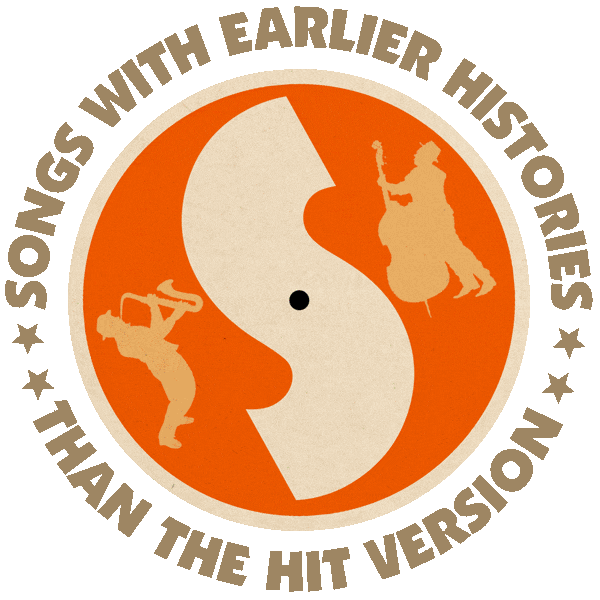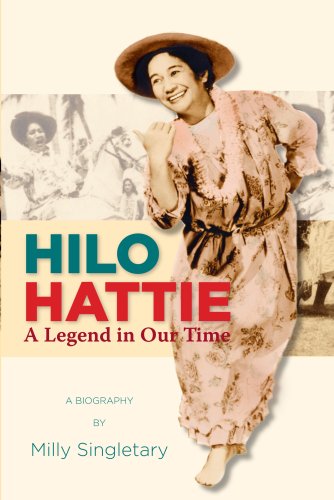First recorded by Ray Kinney & His Hawaiian Musical Ambassadors (1936).
Also recorded by Dick McIntire & His Harmony Hawaiians (1936).
Hit version by Hilo Hattie (Clara Inter) & Al Kealoha Perry and His Singing Surfriders (1937).
From the wiki: “Don McDiarmid and Johnny Noble were members of Harry Owens’ band, the Royal Hawaiians, at the Royal Hawaiian Hotel on Waikiki Beach when they composed ‘When Hilo Hattie Does the Hilo Hop’. Owens considered the song to be ‘inappropriate’ for his band to perform. Instead, former Royal Hawaiian vocalist Ray Kinney (he was the primary vocalist for the the premiere broadcast of Webley Edwards’ Hawaii Calls radio show from the Moana Hotel in July 1935), now leading his own band, the Hawaiian Room Orchestra, arranged the first recording of ‘Hilo Hattie’ on Decca Records under the group name ‘Ray Kinney & His Hawaiian Musical Ambassadors’.
“Hawaiian-born steel guitarist Dick McIntire, and his Mainland orchestra, the Harmony Hawaiians, also released a recording of ‘When Hilo Hattie Does the Hula Hop’ in 1936.
“In 1937, Clara Inter, born Kalala (‘Clara’) Hail, a member of the Royal Hawaiian Girls’ Glee Club, proved Harry Owens wrong by turning ‘When Hilo Hattie Does the Hula Hop’ into a worldwide success, and making it perhaps the most recognized number in Hawaiian history.
“Clara was a Hawaiian schoolteacher [Honolulu’s Waipahu Elementary School, 1923-1939] and a member of Louise Akeo’s Royal Hawaiian Girls Glee Club. Her song was written by Don McDiarmid, who at the time was a member of Harry Owens’ band at the Royal Hawaiian Hotel.
“A fine composer, McDiarmid wrote it as a comic number for the band. Owens was not impressed and said it did not have ‘enough class’ for the orchestra to perform it.
“A year later, Clara came across it and performed it as a comic hula on a voyage to Canada with her glee club. It received a great reception that she continued to dance and sing as part of the glee club tour.
“One night in 1937, Don McDiarmid was playing with his own orchestra in the Royal when Clara, who was performing there with the glee club, told him she was going to do the Hilo Hattie number. Don demurred, saying there was no music for it and no microphone. She insisted, however, and danced barefoot in the middle of the stage in her oversized mu’umu’u, a bandana tied around her hips, a floppy lauhala (pandanus leaf) hat tied on her head. She brought the house down and had to do five encores.
“Although she added other comic numbers, such as ‘Manuela Boy’ and ‘Pidgin English Hula’ to her repertoire, ‘Hilo Hattie’ remained the number the public always demanded. Clara Inter became so closely identified with the song she eventually adopted the title, ‘Hilo Hattie’, as her legal name.”
– Creating Hawai’i Tourism, by Robert C. Allen, 2004
“By 1940, Harry Owens hired Hattie. She also joined the Webley Edwards-hosted Hawaii Calls radio broadcasts that went out to 600 radio stations around the world. From that point on, Hilo Hattie became a global household name, touring the world and performing in movies, including performances alongside Betty Grable in the 1942 feature Songs of the Islands and Elvis Presley in Blue Hawaii, and on television (including a recurring role as ‘Mrs. Pruitt’ on Hawaii Five-0).”
Dick McIntire & His Harmony Hawaiians, “When Hilo Hattie Does the Hilo Hop” (1936):
Clara Inter/Hilo Hattie & Al Kealoha Perry and His Singing Surfriders, “When Hilo Hattie Does the Hilo Hop” (1937):
Hilo Hattie & Betty Grable, “Down on Ami Ami Oni Oni” from Songs of the Islands (1942):


